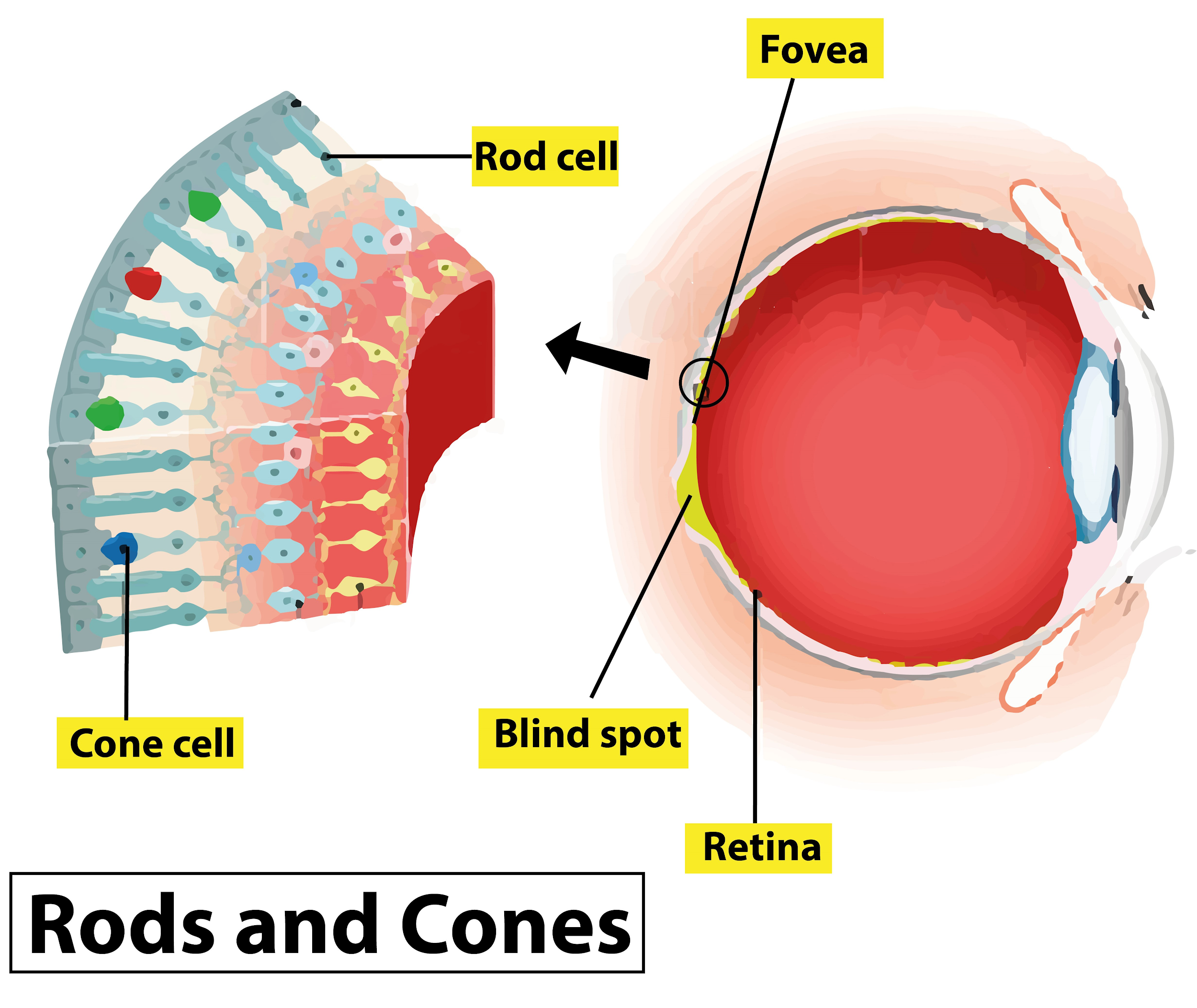Rods And Cones Nerve Cells. Cone cells are one of the photoreceptive cells present in retina along with. These are the cells which. Where are the rods and cones present in the eye? When different light wavelengths enter the eye, they are picked up by rods and cones and. The rods are more numerous, some 120 million, and are more sensitive than the cones.

The rods are more numerous, some 120 million, and are more sensitive than the cones. Exposure of the retina to. the difference in the signals received from the three cone types allows the brain to perceive a continuous range of colors, through the opponent process of color vision. Rods And Cones Nerve Cells Rods, cones, and nerve layers in the retina: Photoreceptor cells ( cone cell, rod cell) → ( horizontal cell) → bipolar cell → ( amacrine cell) → retina ganglion cell (. The photoreceptor cells of vertebrates, the rods and cones, detect and convey information and may thus be classified as neuronal cells.
No image is formed in the blind spot of the human eye because(a) Cones
The front (anterior) of the eye is on the left. in the absence of light, the bipolar neurons that connect rods and cones to ganglion cells are continuously and actively inhibited by the rods and cones. There are three different types. Rod cells function as specialized neurons that convert visual stimuli in the form of. Rods, cones, and nerve layers in the retina: the computational model simulates a spectrum of rod and cone survival scenarios, relating the proportion of surviving rods versus cones to changes in the. Rod cells are photoreceptor cells in the retina of the eye that can function in lower light better than the other type of visual photoreceptor, cone cells. Rods And Cones Nerve Cells.